Dynamic characteristics of biomechanics
Questions.
1. What is the reason for the accelerated movement of bodies?
If a force acts on the body, then as a result the body moves with acceleration.
2. Give examples from life, showing that the greater the force applied to the body, the greater the acceleration imparted by this force.
The ball that is hit harder will fly farther, as it will move at a higher speed, because it was given more acceleration when it was hit.
3. Using Figure 20, describe how the experiments were set up and what conclusions follow from these experiments.
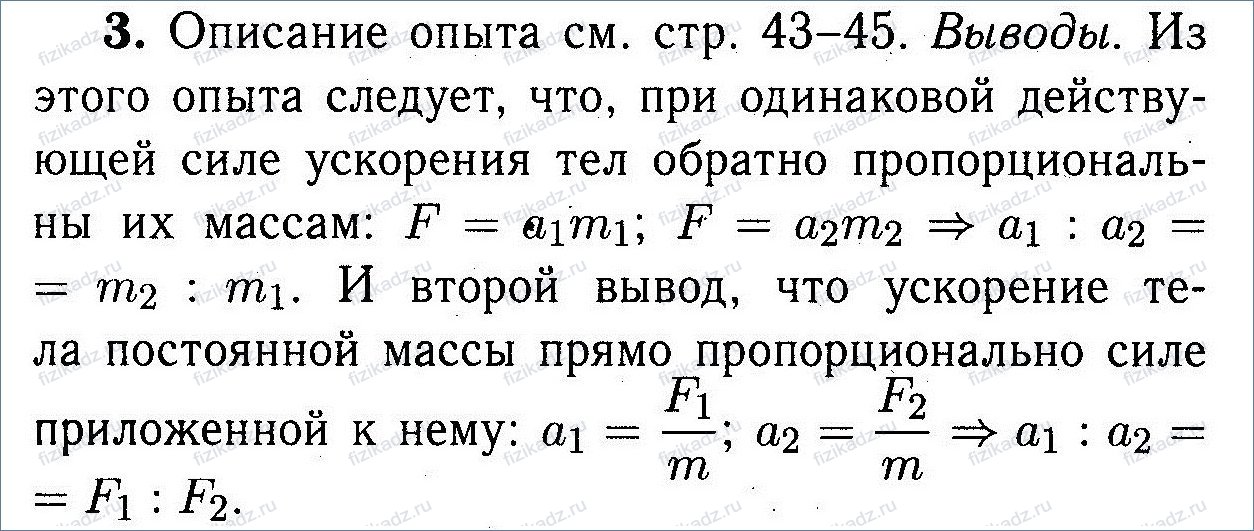
4. How is Newton's second law read? What is the mathematical formula for it?

5. What can be said about the direction of the acceleration vector and the vector of the resultant forces applied to the body?
Acceleration vector a and the vector of the resultant forces F are co-directed.
6. Express the unit of force in terms of units of mass and acceleration.
From the formula F \u003d am, we get 1H \u003d 1kg * 1m / s 2 \u003d 1kg / s 2.
Exercises.
1. Determine the force under which the cyclist rolls down the hill with an acceleration equal to 0.8 m / s 2 if the mass of the cyclist together with the bicycle is 50 kg.
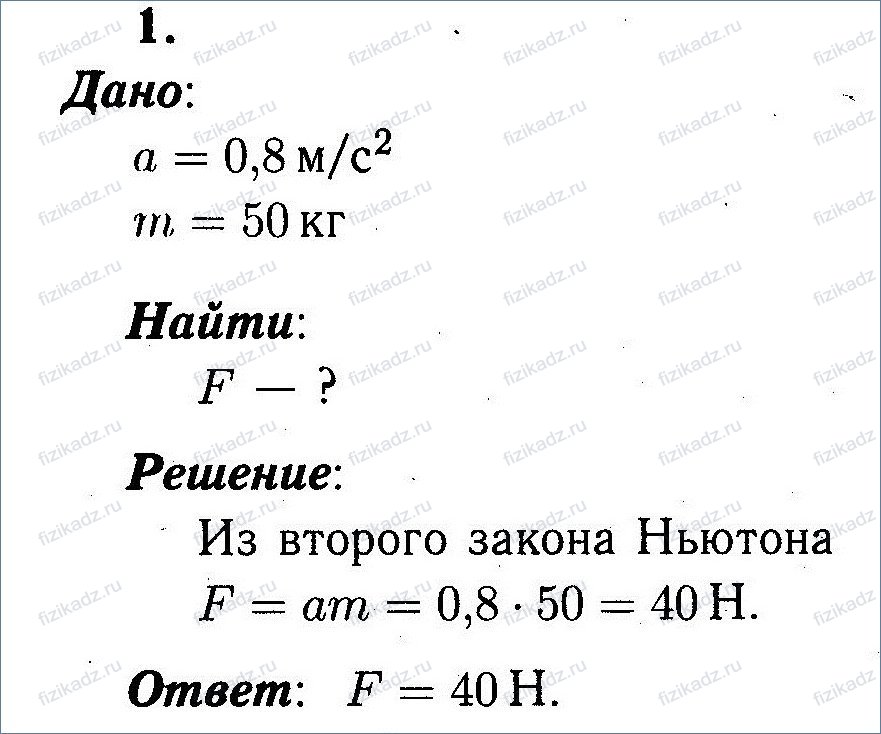
2. After 20 s after the start of movement, the electric locomotive developed a speed of 4 m/s. Find the force imparting acceleration if the mass of the electric locomotive is 184 tons.
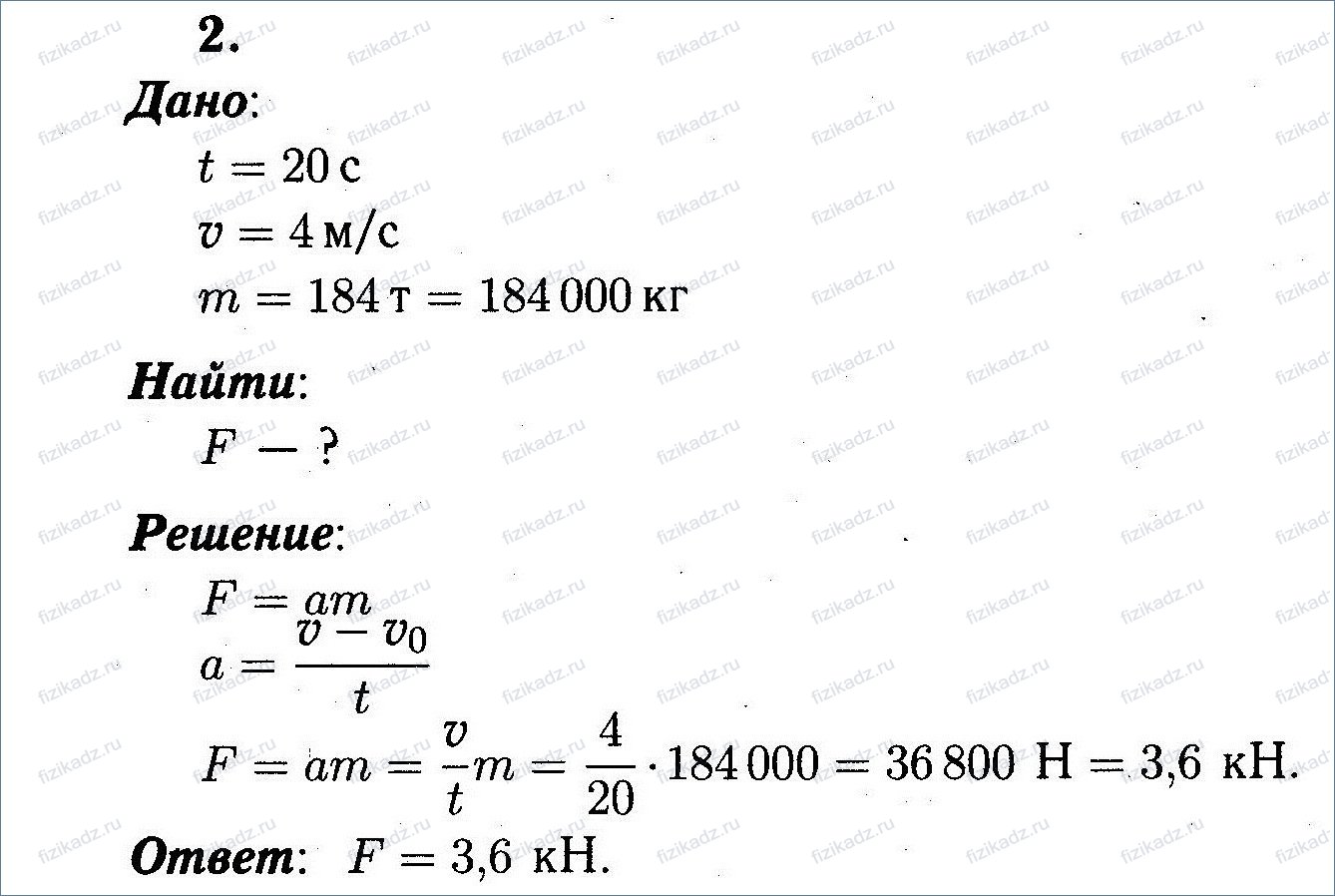
3. Two bodies of equal mass move with accelerations of 0.08 m/s 2 and 0.64 m/s 2, respectively. Are the moduli of the forces acting on the bodies equal? What is the force acting on the second body if a force of 1.2 N acts on the first?

4. With what acceleration will a ball weighing 0.5 kg under water float up if the gravity force acting on it is 5N, the Archimedean force is 10N, and the average motion resistance force is 2N?
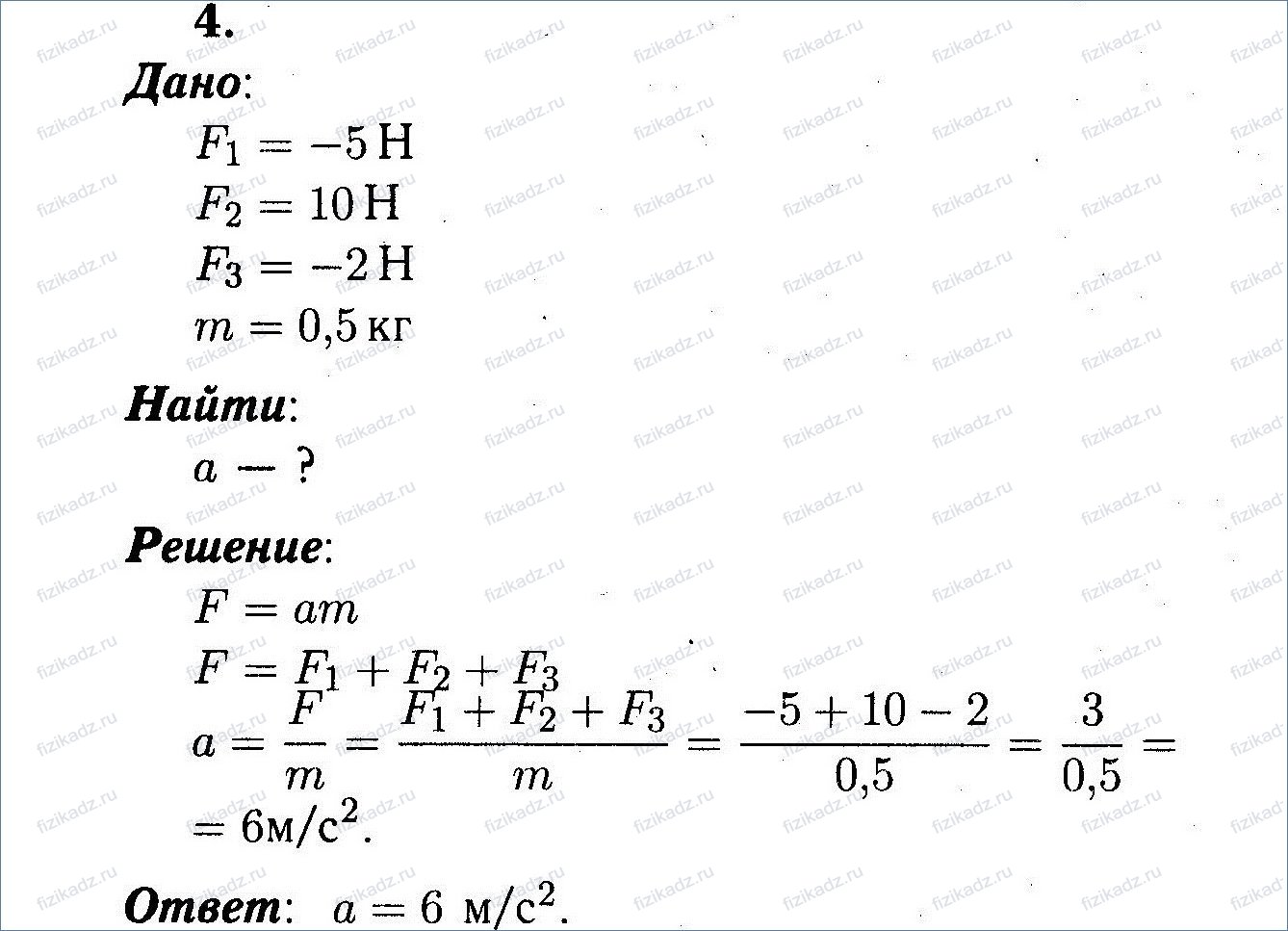
5. The basketball, having passed through the ring and the net, under the influence of gravity, first moves down with increasing speed, and after hitting the floor, up with decreasing speed. How are the vectors of acceleration, velocity and displacement of the ball in relation to the force of gravity when it moves down? up?
When moving up, the velocity and displacement vectors of the ball are directed opposite to gravity, and the acceleration vector is in the same direction. When moving down, the velocity, displacement and acceleration vectors are in the same direction.
6. The body moves in a straight line with constant acceleration. What quantity characterizing the motion of this body is always co-directed with the resultant of the forces applied to the body, and what quantities can be directed oppositely to the resultant?
The acceleration vector is always codirectional with the resultant of the applied forces, and the velocity and displacement vectors can be directed both oppositely and in the same direction.
MUNICIPAL STATE EDUCATIONAL INSTITUTION
"GYMNASIUM No. 4, Ust-Dzheguty"
Abstract open lesson in physics grade 7 on the topic:
"Body weight. Weightlessness"
Prepared by: Urusova S.I.
Ust-Dzheguta
2016-2017
The purpose of the lesson:
educational: consolidate knowledge on the topics “Strength”, “Gravity”, “Elasticity”, introduce the concept of body weight, familiarize with its characteristics, teach how to determine weight;
developing: develop cognitive interest, logical and imaginative thinking, the ability to apply the acquired theoretical knowledge in practice to solve problems;
nurturing: to cultivate independence in the search for a solution to the problem, the formation of educational cooperation, to cultivate independence in preparing for the lesson and the ability to speak in front of the class.
Equipment:"Physics - problem book 7" D.A. Artemenkov, textbook "Physics Grade 7" V.V. Belaga, laboratory dynamometer, set of weights, text for physical dictation, chalk, school board, screen, projector, presentation.
During the classes
Organizing time.
Hello. Sit down.
2. Analysis of the performance of laboratory work, grading in diaries.
3.Repetition of the material covered.
Guys, what forces have we already met?
What is gravity? Where is she headed? What is it attached to?
What about elastic force? And when does the force of elasticity arise?
What is deformation?
What are the two types?
Today we will continue the study of forces. But first, let's check the knowledge on the material covered - we will write a physical dictation.
4. Checking the assimilation of the material.
Physical dictation for grade 7.
1. What letter denotes the force of elasticity and how is the force measured?
2. What is the name of the device for measuring force?
3. What letter is indicated and what is the acceleration free fall?
4. Write down the formula for calculating gravity.
5. Spring stiffness obtained on laboratory work?
Well done. Now let's start learning new material.
5. Learning new material.
Write down the topic of the lesson:
Body weight. Weightlessness.
Remember, we said that the action is always mutual: the Earth attracts the body to itself, and the body attracts the Earth to itself. How does is called?
Then if the support acts on us (by what force?) by the force of elasticity, then we also act on the support. What force is acting on the support?
The force of gravity acts on the body from the side of the Earth, and another force acts on the support from the side of the body, which is called the weight of the body.
Write down:
Weight is the force with which a body, due to attraction to the Earth, acts on a support or suspension.
The load, due to attraction to the Earth, stretches the spring with a force called weight.
So, weight is a force, and not a mass at all, as we used to say. This is the force with which the body acts, presses on the support or suspension.
If the support is stationary, then the weight of the body is numerically equal to strength gravity:
And photo:

The body acts on a support or suspension at the point of contact, is directed under the action of gravity perpendicular to the support.
And what happens if the body does not press on the support? It does not act on the support or suspension, which means that its weight is 0. This state is called weightlessness. Where does weightlessness occur? In space, the attraction to the Earth weakens with increasing distance, the weight decreases, the body soars up and no longer acts on the support. Its weight is 0.
Now each of you is given a unique opportunity to feel like an astronaut. Jump up. When you were in the air, you did not press on the support, and therefore your weight was 0.
Write down:
Weightlessness is a state when the body does not act on a support or suspension.
So, now for a short time we felt like astronauts - we practically went into space.
And space is fraught with many mysteries.
5. Consolidation of the studied material.
a) On little boy, who stands on a chair and reads poetry to guests, the force of gravity is 200 N. What is the weight of this boy? (200N)
b) Check yourself
Establish a correspondence between a physical quantity and its designation. (letter-number)
A) Gravity 1. g
B) Body weight 2. F heavy
C) Body weight 3. P
D) Acceleration 4. k
free 5. m
Answer:
What force is shown in the picture? (number - letter)
A) body weight
B) Support reaction force
B) gravity
Answer:
6. Homework.§26 (read. be able to answer questions)
Additional tasks
An African ostrich egg is different from a chicken egg: its 1.5 cm thick shell can withstand a load of 1270 N. It takes 40 minutes to cook it, and its weight is 18 N. What is its mass? (1.8 kg)
A camel can carry a load, the mass of which does not exceed 320 kg. What is the lifting force of a camel?
The load acts on the camel with its weight, in order to carry it, the camel must apply the same force. It's called lifting. (3200 N)
7. Summary of the lesson. Reflection.
The lesson is coming to an end. It's time to check what you've learned. Rate yourself in class: The screen displays images that characterize the state of a person. Choose the image that matches your state after this lesson.

The motion of a body under the action of gravity is one of the central topics in dynamic physics. Even an ordinary schoolboy knows that the dynamics section is based on three. Let's try to understand this topic thoroughly, and an article describing each example in detail will help us make studying the movement of a body under the influence of gravity as useful as possible.
A bit of history
From time immemorial, people have observed with curiosity the various phenomena occurring in our lives. Mankind for a long time could not understand the principles and structure of many systems, but a long way of studying the world around us led our ancestors to a scientific revolution. Nowadays, when technology is developing at an incredible speed, people hardly think about how certain mechanisms work.
Meanwhile, our ancestors have always been interested in the mysteries of natural processes and the structure of the world, looking for answers to the most difficult questions and did not stop studying until they found answers to them. So, for example, the famous scientist Galileo Galilei, back in the 16th century, asked himself questions: "Why do bodies always fall down, what kind of force attracts them to the earth?" In 1589, he set up a series of experiments, the results of which proved to be very valuable. He studied in detail the patterns of free fall of various bodies, dropping objects from the famous tower in the city of Pisa. The laws that he deduced were improved and described in more detail by formulas by another famous English scientist - Sir Isaac Newton. It is he who owns the three laws on which almost all modern physics is based.

The fact that the laws of motion of bodies, described more than 500 years ago, are still relevant to this day, means that our planet is subject to immutable laws. Modern man it is necessary to at least superficially study the basic principles of arranging the world.
Basic and auxiliary concepts of dynamics
In order to fully understand the principles of such a movement, you must first familiarize yourself with some concepts. So, the most necessary theoretical terms:
- Interaction is the action of bodies on each other, in which there is a change or the beginning of their movement relative to each other. There are four types of interaction: electromagnetic, weak, strong and gravitational.
- Speed is physical quantity denoting the speed with which the body moves. Velocity is a vector, meaning it has not only a value, but also a direction.
- Acceleration is the value that shows us the rate of change in the speed of a body in a period of time. She is also
- The trajectory of the path is a curve, and sometimes a straight line, which the body outlines when moving. With uniform rectilinear motion, the trajectory may coincide with the displacement value.
- The path is the length of the trajectory, that is, exactly as much as the body has traveled in a certain amount of time.
- An inertial frame of reference is an environment in which Newton's first law is fulfilled, that is, the body retains its inertia, provided that all external forces are completely absent.
The above concepts are quite enough to correctly draw or imagine in the head a simulation of the movement of a body under the influence of gravity.

What does strength mean?
Let's move on to the main concept of our topic. So, force is a quantity, the meaning of which is the impact or influence of one body on another quantitatively. And gravity is the force that acts on absolutely every body located on the surface or near our planet. The question arises: where does this power come from? The answer lies in the law gravity.
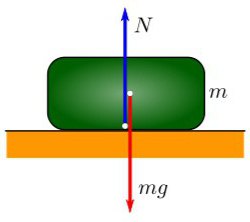
What is gravity?
Any body from the side of the Earth is influenced by the gravitational force, which gives it some acceleration. Gravity always has a vertical downward direction, towards the center of the planet. In other words, gravity pulls objects towards the earth, which is why objects always fall down. It turns out that gravity is special case force of gravity. Newton deduced one of the main formulas for finding the force of attraction between two bodies. It looks like this: F \u003d G * (m 1 x m 2) / R 2.
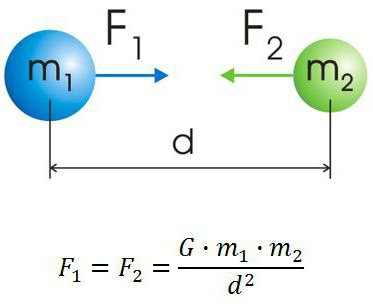
What is the free fall acceleration?
A body released from a certain height always flies downwards under the influence of gravity. The movement of a body under the action of gravity vertically up and down can be described by equations, where the main constant will be the value of the acceleration "g". This value is due solely to the action of the force of attraction, and its value is approximately 9.8 m/s 2 . It turns out that a body thrown from a height without an initial velocity will move down with acceleration equal to the value"g".
Motion of a body under the action of gravity: formulas for solving problems
The basic formula for finding the force of gravity is as follows: F gravity \u003d m x g, where m is the mass of the body on which the force acts, and "g" is the acceleration of gravity (to simplify tasks, it is considered to be equal to 10 m / s 2) .
There are several more formulas used to find one or another unknown when free movement body. So, for example, in order to calculate the path traveled by the body, it is necessary to substitute known values \u200b\u200binto this formula: S \u003d V 0 x t + a x t 2 / 2 (path is equal to the sum products of initial velocity times time and acceleration times the square of time divided by 2).
Equations for describing the vertical motion of a body
The movement of a body under the action of gravity along the vertical can be described by an equation that looks like this: x \u003d x 0 + v 0 x t + a x t 2 / 2. Using this expression, you can find the coordinates of the body at a known point in time. You just need to substitute the values known in the problem: the initial location, the initial speed (if the body was not just released, but pushed with some force) and acceleration, in our case it will be equal to the acceleration g.
In the same way, you can find the speed of a body that moves under the influence of gravity. The expression for finding an unknown value at any time: v \u003d v 0 + g x t (the value of the initial speed can be equal to zero, then the speed will be equal to the product of the free fall acceleration by the time value for which the body moves).

Movement of bodies under the action of gravity: tasks and methods for their solutions
For many problems involving gravity, we recommend using the following plan:
- To determine for yourself a convenient inertial frame of reference, it is usually customary to choose the Earth, because it meets many of the requirements for ISO.
- Draw a small drawing or drawing that shows the main forces acting on the body. The motion of a body under the influence of gravity implies a sketch or diagram that indicates in which direction the body moves if it is subjected to an acceleration equal to g.
- Then you should choose the direction for projecting the forces and resulting accelerations.
- burn unknown quantities and determine their direction.
- Finally, using the formulas above to solve problems, calculate all unknowns by substituting the data into the equations to find the acceleration or distance traveled.
Ready solution for an easy task
When we are talking about such a phenomenon as the movement of a body under the influence of gravity, determining which way is more practical to solve the problem at hand can be difficult. However, there are a few tricks, using which you can easily solve even the most difficult task. So, let's take a look at live examples of how to solve a particular problem. Let's start with an easy to understand problem.
A body was released from a height of 20 m without initial velocity. Determine how long it will take to reach the earth's surface.
Solution: we know the path traveled by the body, we know that the initial speed was equal to 0. We can also determine that only gravity acts on the body, it turns out that this is the movement of the body under the influence of gravity, and therefore we should use this formula: S = V 0 x t + a x t 2 /2. Since in our case a \u003d g, after some transformations we get the following equation: S \u003d g x t 2 / 2. Now it remains only to express the time through this formula, we get that t 2 \u003d 2S / g. Let us substitute the known values (we assume that g \u003d 10 m / s 2) t 2 \u003d 2 x 20 / 10 \u003d 4. Therefore, t \u003d 2 s.
So our answer is: the body will fall to the ground in 2 seconds.
A trick that allows you to quickly solve the problem is as follows: you can notice that the described movement of the body in the above problem occurs in one direction (vertically down). It is very similar to uniformly accelerated motion, since no force acts on the body, except for gravity (we neglect the force of air resistance). Thanks to this, you can use an easy formula for finding a path with uniformly accelerated movement, bypassing the images of drawings with the arrangement of forces acting on the body.
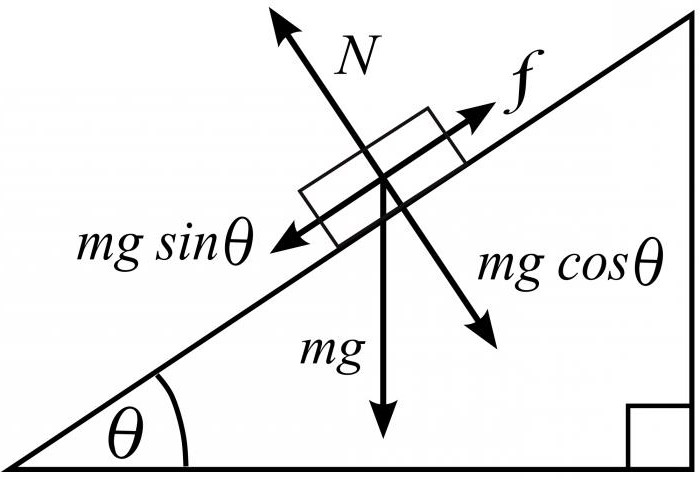
An example of solving a more complex problem
And now let's see how it is better to solve problems for the movement of a body under the influence of gravity, if the body does not move vertically, but has a more complex nature of movement.
For example, the following task. An object of mass m is moving with unknown acceleration down the inclined plane, whose friction coefficient is equal to k. Determine the value of the acceleration that is present when the given body moves, if the angle of inclination α is known.
Solution: You should use the plan described above. First of all, draw a drawing of an inclined plane with the image of the body and all the forces acting on it. It turns out that three components act on it: the force of gravity, friction and the reaction force of the support. Looks general equation resultant forces as follows: F friction + N + mg = ma.
The main highlight of the problem is the condition of inclination at an angle a. When projecting forces onto the ox axis and the oy axis, this condition must be taken into account, then we will get following expression: mg x sin α - F friction = ma (for the x axis) and N - mg x cos α = F friction (for the oy axis).
F friction is easy to calculate by the formula for finding the friction force, it is equal to k x mg (friction coefficient multiplied by the product of body mass and free fall acceleration). After all the calculations, it remains only to substitute the found values \u200b\u200bin the formula, a simplified equation will be obtained for calculating the acceleration with which the body moves along an inclined plane.
What is the reason for the movement of bodies? The answer to this question is given by the branch of mechanics called dynamics.
How can you change the speed of a body, make it move faster or slower? Only when interacting with other bodies. When interacting, bodies can change not only the speed, but also the direction of movement and deform, while changing the shape and volume. In dynamics, for a quantitative measure of the interaction of bodies on each other, a quantity called force is introduced. And the change in speed during the action of the force is characterized by acceleration. Force is the cause of acceleration.
The concept of strength
Force is a vector physical quantity that characterizes the action of one body on another, manifested in the deformation of the body or a change in its movement relative to other bodies.
Force is denoted by the letter F. The unit of measure in the SI system is Newton (N), which is equal to the force under the action of which a body weighing one kilogram receives an acceleration of one meter per second squared. The force F is completely determined if its modulus, direction in space, and point of application are given.
To measure forces, a special device called a dynamometer is used.
How many forces are there in nature?
Forces can be divided into two types:
- They act with direct interaction, contact (elastic forces, friction forces);
- They act at a distance, long-range (attraction, gravity, magnetic, electric).
In direct interaction, for example, a shot from a toy gun, the bodies experience a change in shape and volume compared to the original state, that is, deformation of compression, stretching, bending. The pistol spring is compressed before firing, the bullet is deformed when it hits the spring. In this case, the forces act at the moment of deformation and disappear along with it. Such forces are called elastic. Friction forces arise from the direct interaction of bodies, when they roll, slide relative to each other.
An example of forces acting at a distance is a stone thrown up, due to gravity, it will fall to the Earth, ebbs and flows that occur on ocean coasts. As the distance increases, these forces decrease.
Depending on the physical nature of the interaction, forces can be divided into four groups:
- weak;
- strong;
- gravity;
- electromagnetic.
We encounter all types of these forces in nature.
Gravitational or gravity forces are the most universal, anything that has mass is capable of experiencing these interactions. They are omnipresent and all-pervading, but very weak, so we do not notice them, especially at great distances. Gravitational forces are long-range, binding all bodies in the universe.
Electromagnetic interactions occur between charged bodies or particles, through the action electromagnetic field. Electromagnetic forces allow us to see objects, since light is one of the forms of electromagnetic interactions.
Weak and strong interactions became known thanks to the study of the structure of the atom and atomic nucleus. Strong interactions occur between particles in nuclei. Weak ones characterize mutual transformations into each other elementary particles, act in thermonuclear fusion reactions and radioactive decays of nuclei.
What if several forces act on the body?
When several forces act on a body, this action is simultaneously replaced by one force equal to their geometric sum. The force obtained in this case is called the resultant force. It imparts the same acceleration to the body as the forces simultaneously acting on the body. This is the so-called principle of superposition of forces.
The concept of force is very important for all physics, because it is force that is the cause that changes motions. physical bodies. Although we very often feel the action of various forces on ourselves, it is rather difficult to determine what a force is. Mechanics studies various forces chiefly by their action on bodies. If we notice that any body has changed the speed or direction of movement, then we say that a force has acted on it. Therefore, the most common definition is: force is the action of one body on another. But there is very little positive content in this formulation, since it does not reveal the mechanism of action.
The fact that the forces have a different nature can be seen at least from the following examples. With muscular effort, we move the loaded cart, and, having reached a certain speed, it rolls evenly. Here manifests itself one body action(of our hands) to another(cart). Friction force gradually stops the railway car, which moves by inertia.
But here is an example of another force: a stone falls to the ground with uniform acceleration. It affects him gravity. This force is somewhat unusual because here one body (Earth) acts on another (stone) at a distance without any intermediate contact. The forces of universal gravitation extend to the entire Universe and act between all material bodies, no matter how far they are from each other. Forces of electrostatic and magnetic attraction similar to the force of gravity because these forces also act at a distance.
There is a third kind of force, it is called the force of inertia. We feel it especially well when the bus brakes hard or makes a sharp turn.
We have already said that the forces acting between different bodies are the same with respect to inertial systems reference. Here it is appropriate to say a few words about non-inertial frames of reference. One can imagine an observer who does not move uniformly, but with acceleration. Then the whole physical world will seem to him completely different, and he will discover that forces act on the bodies, which in fact do not exist.
Let, for example, someone conducts his observations through the glass walls of an elevator car, which freely falls into a deep well. With such a fall, the observer will be in a state of weightlessness; therefore, he can assume that the force of gravity does not act on him! By measuring the speed of movement of various bodies relative to themselves (for example, the speed of the wall of the mine in which the fall occurs), he will establish that the wall moves uniformly accelerated and, therefore, according to Newton's law, a force must act on it.
But common sense tells a skydiver in a long jump that the Earth is approaching him faster and faster, not because some force imparts acceleration to it. He knows that Newton's law here should be understood as follows: it is he, the parachutist, who falls with uniform acceleration.
In terrestrial conditions, it is relatively easy to determine which body the force is applied to. But imagine yourself in outer space. We watch some distant star and find that it is moving towards us at an accelerated rate. Let's assume that we know its mass. Then we determine the force acting on it and based on this we can make several different assumptions:
- The star is motionless, no force acts on it, and we fall on its surface.
- We move evenly and in a straight line, and the star is a giant spaceship picking up speed.
- Both we and the star move under the influence of different forces. Maybe the star is attracted to itself by some huge, invisible material body.
Deciding which of the assumptions is correct is very difficult until more research is done. These difficulties arise because in non-inertial frames of reference, in addition to "ordinary" forces, there are also "fictitious" forces both inside the frame of reference and outside it. An example of the action of a fictitious force is the accelerated movement of the shaft walls, observed from a freely falling elevator car. We define fictitious forces only on the basis of measurements. However, inside a non-inertial system, ordinary, non-fictitious forces are no less real than outside this system.
Recall, for example, overload force, which the astronaut experiences on the active part of the trajectory spaceship. Moving accelerated against the force of gravity, it is possible to create an overload several times greater than the force of gravity on the surface of the Earth. Not without reason, overloads are usually measured in units of g (g is the acceleration of gravity on the surface of the Earth). If an astronaut experiences an overload of 5g, then this means that his weight becomes five times more than on Earth.
These forces are caused by inertia: the body, in accordance with Newton's first law, tends to maintain a state of rest or uniform and rectilinear motion. A change in this state leads, according to the law of action and reaction, to the "resistance" of the body. That's why sometimes law of action and reaction are written in the form:
where F is the acting force and ma is the inertial force. The force of inertia is proportional to the mass of the body.
In mechanics, essentially, one has to deal with two kinds of mass. To understand this, we write Newton's second law and law of gravity:
f = γmM / R 2 .
The second formula expresses the force of mutual attraction between the masses m and M, R is the distance between the bodies, and γ is the so-called gravitational constant. In one case, the body is under the action of a force F, and in the second case, under the action of an attractive force f. Should we understand the same quantity by the mass m in both cases?
It is believed that both masses are the same, although in classical mechanics this does not follow from anywhere and is not proven in any way. Indeed, in Newton's second law, mass m is a measure of the "resistance" of a body to the action of a force or measure of inertia. The larger the mass, the more it resists the action of force, and therefore, at the same value operating force acquires less acceleration.
In the law of universal gravitation, however, the mass m participates in some "mysterious" interaction with another mass separated from it by a distance R. Here, the mass is "active" in its action on another mass, in contrast to the "passive", resisting mass of inertia. This active mass is called gravitational.
It "has the right" to be distinguishable from the inertial mass. Einstein considered universal gravitation not as a property inherent in material bodies, but as a property of space near material bodies. He proceeded from the fact that gravitational attraction does not depend on the internal structure of the substance.
And in nature there are forces for which the internal structure of bodies is not indifferent. A magnet, for example, does not attract every body. Diamagnetic substances are even repelled by a magnetic field. The reason for this is in the deep features of the atomic and molecular structure.
The gravitational attraction of masses does not depend on their chemical and physical nature. In addition, it has been proven both experimentally and theoretically that the speed of the fall of various bodies to the Earth does not depend on their mass. In a vacuum, a fluff and a kilogram weight will fall from any height at the same speed.
Claiming justice Galilean transformations , we put forward a hypothesis about an isotropic and homogeneous space. Such a hypothesis is correct if we assume that the properties of space do not depend on the presence of material bodies in it. Einstein, proceeding from the identity of inertial and gravitational masses, suggested that space changes its properties near material bodies, that it ceases to be homogeneous and isotropic, and the trajectories of motion of other bodies in such space are curved. The observer perceives such a change in spatial properties as the operation of the law of universal gravitation. Einstein's assumption was subsequently repeatedly confirmed in experiments.
To finish the story about forces, we will consider one interesting class of forces that act not in the direction of motion of bodies.
The speed and acceleration of the body and the distance to it from the starting point of reference are all vector quantities, that is, they have a direction. If the body moves freely in space, the direction of its movement coincides with the direction of the force.
However, this happens differently if the motion of the body is "coupled". For example, movement along a circular path has a remarkable property: the direction of the speed of movement and the direction of action centripetal force mutually perpendicular. The planets, moving in elliptical orbits around the Sun, experience the action of centripetal forces, which are directed at an angle to the vector of their motion. The centripetal force is balanced by the force of attraction towards the Sun, so that the net force is zero and the planets move by inertia.
Rice. "Ferris wheel".

Rice. 5. The rotation of the Earth causes water to wash away the right bank of rivers flowing from north to south and from south to north..
It may seem strange that we are talking about inertia in a curvilinear orbit, because inertial motion, according to Newton, is possible only along straight lines. It is precisely here that Einstein's proposition that straight lines, along which bodies can move by inertia, becomes curved near material bodies, has an effect. Experiments have shown that even light bends its path near the Sun. But its rectilinear distribution was not in doubt before.
There is an inertial force, the action of which is not manifested while the body is motionless, but it immediately reveals itself as soon as the body begins to move. A body moves along the radius of a rotating disk (“ferris wheel”) in time t from point A to point B. If point A is located at a distance R 1 from the center, and point B is at a distance R 2, then the linear speed of rotation of these points will be ωR 1 and ωR 2 , where ω is circular speed disk. This means that during the time t the speed of the body in the direction perpendicular to the radius will change by the value ω(R 2 - R 1). Therefore, it will be accelerated
a \u003d ω (R 2 - R 1) / t,
or force F = mωV.
If the velocity of the body V along the radius of the disk is zero, the force F is also zero. This force acts perpendicular to the motion of the body on the disk. It is called the Coriolis force. On Earth, this force, for example, manifests itself when rivers flow along the meridians (Fig. 5). If the river flows from north to south, then due to the rotation of the Earth from west to east, the Coriolis force acts and the water washes away the western bank; if from south to north, then east. AT southern hemisphere it all happens in reverse.






